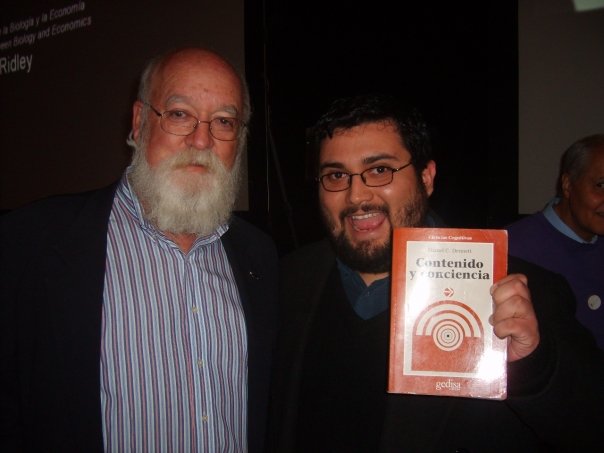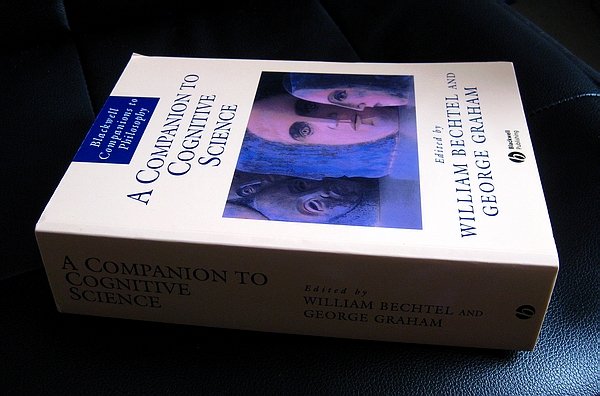Los cientistas cognitivos (psicólogos, filósofos, linguistas, etc) rara vez aparecen en las páginas sociales de El Mercurio. Suelen ser tipos quitados de bulla, y no son divos en lo absoluto (es más, cuando se les pide el autografo, les brillan los ojitos). Por lo mismo, suele pasar que cuando uno los menciona, la gente se queda mirando con cara de “¿… y ese Pinker a quien le ha ganado?” o “¿…y quien es ese Fodor al que pelan tanto?”
Si le gusta la ciencia congnitiva, pero se pierde cada vez que le mencionan nombres de autores, aquí tiene la solución: William Bechtel, co-editor de una de las biblias de la Ciencia Cognitiva (el A Companion to Cognitive Science – Blackwell, 1998) compilo una completa lista de los titanes, el quién es quién en la Ciencia Cognitiva. La lista es viejita (loss teen titans no aparecen), pero están prácticamente todos los clásicos. Como ejemplo, les copy-pasteo unas cuantas bios:
Bruner, Jerome (b. 1915, New York City; Ph.D., Psychology, Harvard, 1941). Having spent the major portion of his career at Harvard, Bruner later worked at Oxford and the New School for Social Research and is currently Research Professor in Psychology and Senior Research Fellow in the School of Law at New York University. In the 1940s Bruner, together with Leo Postman, developed what came to be called the new look movement in perception which emphasized the role of active psychological processes in perception. Together with George Miller, he founded the Harvard Center for Cognitive Studies in 1960. Following A Study of Thinking in 1956, on concept acquisition, Bruner’s interest turned increasingly to developmental psychology and the relation between culture and mental development. Most recently he has emphasized narrative and the nature of interpretive activity. His numerous books include Actual Minds, Possible Worlds (1987), Acts of Meaning (1991), and The Culture of Education (1996).
Dennett, Daniel (b. 1942; D.Phil., Philosophy, Oxford, 1965). Dennett has spent most of his career at Tufts University, where he is now Director of the Center for Cognitive Studies. In his book The Intentional Stance (1987) he argues that intentionality can be explained in terms of a stance that we are forced to take toward complex, adaptive systems that behave rationally. His 1991 book Consciousness Explained argues that consciousness can be identified with a covert stream of internalized discourse. Other important works by Dennett include Content and Consciousness (1969), Brainstorms (1979), Elbow Room (1984), and Darwin‘s Dangerous Idea (1995).
Fodor, Jerry A. (b. 1935, New York City; Ph.D. Philosophy, Princeton, 1960). Until 1986 Fodor was on the faculty at MIT, where he became an early expositor of Chomsky’s program in linguistic, collaborated in psycholinguistic research, and developed his own strongly nativistic theory. Fodor defended the claim that thinking invokes a language-like medium in The Language of Thought (1975). His 1983, book The Modularity of Mind, defends a strong version of faculty psychology, according to which the mind consists of informationally encapsulated, low-level perceptual modules which feed information to higher-level central cognitive processes are non-modular. According to Fodor, only modular cognitive processes can be studied scientifically. Since moving to Rutgers University in 1988, Fodor has been an ardent critic of connectionist models of cognitive phenomena, arguing that they cannot account for the rationality of thought.
Marr, David (b. 1945, Woodford, England, d. 1980) Trained in psychology, Marr held research fellowships at Trinity College and King’s College, Cambridge, before moving to MIT, where he was a member of the AI Lab from 1973 until his death in 1980. In his early work, Marr developed computational models of a number of neural systems, including the cerebellum and the hippocampus. His major contribution, though, concerned computational models of visual processes, including the extraction of lines from retinal images, the determination of depth and motion, and the representation of objects to facilitate recognition. His book, Vision: A Computational Investigation into the Human Representation and Processing of Visual Information, was published posthumously in 1982 and is still influential.
Guarde el link en sus favoritos…
Biographies of Major Contributors to
Cognitive Science
Ah, y si le tincó el Companion… mi copia se la encargue a nuestro traficante de libros. 🙂








2 comments
María Virginia Silva Rocco says:
May 28, 2010
Interesante el último comentario…
“Ah, y si le tincó el Companion… mi copia se la encargue a nuestro traficante de libros”
Remis Ramos says:
May 28, 2010
a shameless publicity plug… es que me los trae rebajados si le hago publicidad, y el siempre nos hace barra a nosotros en su blog 😉